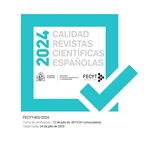El foro del lugar del daño en la vulneración de los derechos de la personalidad en línea: la perdurabilidad del criterio del mosaico y el acceso al contenido como una exigencia de atribución de competencia comentario a la STJUE de 21 de diciembre de 2021. (RI §424861)

Forum loci damni and online infringement of personality rights: the odds of basing jurisdiction on the mosaic approach and access to content in the seized country -
Paula Paradela Areán
La STJUE de 21 de diciembre de 2021 resuelve una cuestión prejudicial relativa a la determinación de la competencia judicial internacional en un supuesto de contenidos ilícitos publicados en Internet. El Tribunal de Justicia interpreta el artículo 7.2 del Reglamento Bruselas I bis y reafirma dos antiguos criterios: la aplicación de la teoría del mosaico en los supuestos de vulneraciones al derecho de la personalidad realizados online y la mera accesibilidad en el foro a los contenidos como exigencia suficiente para determinar la competencia.
I. INTRODUCCIÓN. II. EL FORO DEL LUGAR DEL DAÑO EN LOS SUPUESTOS DE VULNERACIÓN DE LOS DERECHOS DE LA PERSONALIDAD DE PERSONAS JURÍDICAS EN LÍNEA: EVOLUCIÓN JURISPRUDENCIAL. III. ANÁLISIS CRÍTICO. 1. El mantenimiento de la “teoría del mosaico” para las vulneraciones de los derechos de la personalidad a través de Internet. 2. La accesibilidad como único requisito para determinar el lugar de manifestación del daño. IV. CONCLUSIONES.
The Court of Justice decided on 21 December 2021 on a preliminary ruling concerning the international jurisdiction to examine a claim dealing with online infringement of personality rights. The interpretation made in this judgment of Article 7.2 of the Brussels I bis Regulation is based on two well-established criteria. First, the Court of Justice does not deviate from the so-called mosaic approach which is meant to be applicable even in these cases concerning defamatory content disseminated online. And second, it is understood that being this information available in the seized jurisdiction, this is sufficient to fulfill the head of jurisdiction laid down in the said Article 7.2. The conservative approach taken by the Court of Justice in this judgment is nevertheless not in line with the challenges that the internet poses to this head of jurisdiction.

 DIRECCIÓN / MANAGEMENT
DIRECCIÓN / MANAGEMENT